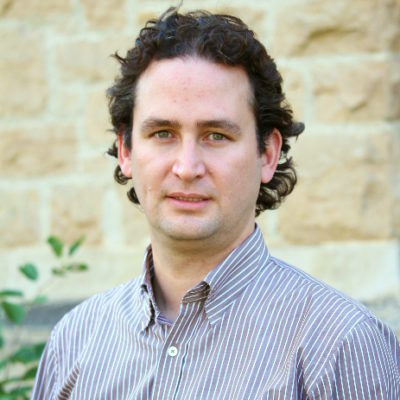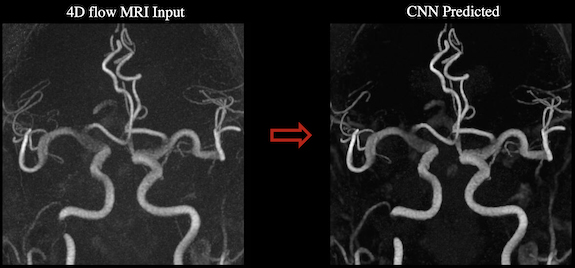
In 2015 Assistant Professor Alejandro Roldán-Alzate, PhD started the Cardiovascular Fluid Dynamics Laboratory. The lab uses medical imaging, additive manufacturing, and computational fluid dynamics to analyze physiological and pathological flows. Using their research findings, the lab collaborates with physicians to develop improved diagnostic and surgical planning techniques. Continue reading to learn more about this dynamic lab and their current research projects.
Dr. Roldán-Alzate is a biomedical engineer by training, and obtained his PhD in mechanical engineering, with a focus on numerical simulation of physiological flows. This background gives him a unique perspective and allows him to approach cardiovascular health issues from a technical angle. “I have always been interested in applying engineering to solve health problems, specifically those dealing with fluid dynamics,” says Dr. Roldán-Alzate.
While there have been many research projects, Dr. Roldán-Alzate’s favorite so far has been implementing 3D printing and fluid dynamics modeling for congenital heart disease. 3D printed physical models based on patient scans allow for simulation of surgical interventions and control of fluid properties. Combining these techniques allows for procedures to be tailored toward individual patients, leading to improved diagnostic and surgical outcomes. Dr. Roldán-Alzate has worked on this project in many stages, from fetal hearts to patients already treated with surgery, and has had the opportunity to improve his methods and see his work in clinical use.
The Cardiovascular Fluid Dynamics Lab is currently working on several exciting projects. One project is focused on non-invasive assessment of hemodynamics in different cardiovascular conditions such as congenital heart disease, atrial fibrillation, portal hypertension, and more. Atrial fibrillation is the most common type of cardiac arrythmia worldwide. The lab is using 4D flow MRI, fluid dynamics, and physical model experiments with pulse duplicators to better understand atrial fibrilization hemodynamics. The research aims to improve MR diagnostics for detection and treatment.
Another project the lab is working on is implementing computational simulation-based machine learning to enhance 4D flow MRI. By combining 4D flow MRI data with computational fluid dynamics-informed neural networks, the lab is able to produce highly accurate physiological flow fields. This allows them to overcome quantitative and qualitative analysis errors inherent to phase contrast MRI, which is an MRI method used to determine flow velocities and provide 4D imaging.
The lab branched out from its cardiovascular-focused research to study urinary flow dynamics. Specifically, they are looking at non-invasive assessment of urodynamics in patients with prostatic problems. Using advanced MRI sequences and computational fluid dynamics, their research is predicting how urinary tract flow dynamics during voiding are affected by benign prostate hyperplasia and lower urinary tract symptoms.
In addition to these projects, the lab is focused on gold standard validation of their quantitative flow dynamics metrics that they’ve derived from 4D flow MRI by using high-definition optical methods. They are continuing to develop methodologies for manufacturing 3D printed patient-specific organ models. They are also using hydrogels and polymeric resins to develop MRI phantoms for different applications.
The lab may be busy with all their current projects, but they continue to look towards the future of their research. Dr. Roldán-Alzate plans to continue developing in vivo, in vitro, and computational methods for assessing cardiovascular conditions. He also wants to further expand their research to study physiological and pathological flows beyond the cardiovascular system.
While the Cardiovascular Fluid Dynamics Lab may appear to be a technical engineering lab, the team is here to make physician’s jobs easier and improve care for patients. Dr. Roldán-Alzate is proud of the way the lab’s research is able to help solve health problems. “Having the ability to get the model of a patient’s heart in the surgeon’s hands before surgery gives the surgeon the opportunity to determine their strategy and improve their techniques so the patient has the best possible outcome,” says Dr. Roldán-Alzate.
Learn more about the Cardiovascular Fluid Dynamics Lab and their current research here: https://uwcvfd.engr.wisc.edu/research-2/

